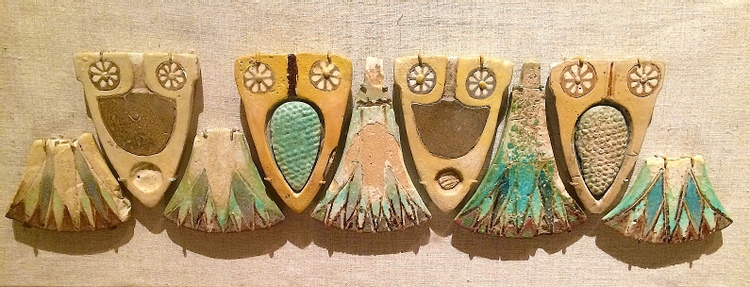Illustration
Although the use of glazed tiles and colored paste inlays is known from as early as the Old Kingdom, the apogee of their use came during the New Kingdom. An almost identical frieze of lotuses, other flowers, and grape clusters is known to have adorned a wall of a palace of the Pharoah Ramesses III (c. 1184-1153 BCE) at Tell el Yahudiya in Lower Egypt. It is likely that this frieze was made during the same time period and perhaps the same place. (Brooklyn Museum, New York.)
Cite This Work
APA Style
Wiener, J. B. (2017, November 08). Floral Frieze from Ancient Egypt. World History Encyclopedia. Retrieved from https://www.worldhistory.org/image/7581/floral-frieze-from-ancient-egypt/
Chicago Style
Wiener, James Blake. "Floral Frieze from Ancient Egypt." World History Encyclopedia. Last modified November 08, 2017. https://www.worldhistory.org/image/7581/floral-frieze-from-ancient-egypt/.
MLA Style
Wiener, James Blake. "Floral Frieze from Ancient Egypt." World History Encyclopedia. World History Encyclopedia, 08 Nov 2017. Web. 19 Apr 2024.

